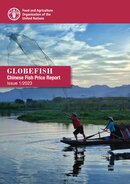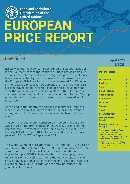出版物
The FAO GLOBEFISH Chinese Fish Price Report, based on information supplied by industry correspondents, aims to provide guidance on broad price trends. In the last years, China remained the top fish producer in the world with strong linkages with this historical evolution growth of aquaculture vis-à-vis wild capture fisheries. In addition, China is a country where international trade plays a significant role in fish and fish products. The Chinese Fish Price Report fills an existing gap...
Easter was the main consumption period of seafood, especially in the Southern part of the continent. Prices are still going up as consumer interest continues strong, and practically all price levels are accepted by the consumers. In the present issue of the European Fish Price Report, prices increased for 25 percent of the recorded prices; for 20 percent they declined, while 55 percent stayed stable. Overall, salmon prices fell somewhat after the sky-high levels reached...
Production and trade grew slightly, with fish consumption recovering to 2018 levels due to strengthening demand. Global fish production increased by 1.2 percent in 2022 to 184.1 million tonnes. Output from aquaculture will grow by 2.6 percent, remaining marginally behind its long-term growth rate of 3.3 percent between 2015 and 2020.
Inflationary pressure has seen demand shift further towards aquaculture products, which have remained relatively stable in price and supply compared to many major capture species. Price increases for capture species have been particularly pronounced for whitefish, which according to the FAO Fish Price Index rose by 55 percent between January and June.
Demand for seafood is slowing in the European market, as inflation is passed on to consumers. In a recent study on the impact of the Ukraine conflict on European Union consumer behaviour, it was found that 50 percent of the interviewed felt fish prices went up strongly. Fish was thus second only to red meat among all food products where such price increases were seen.






